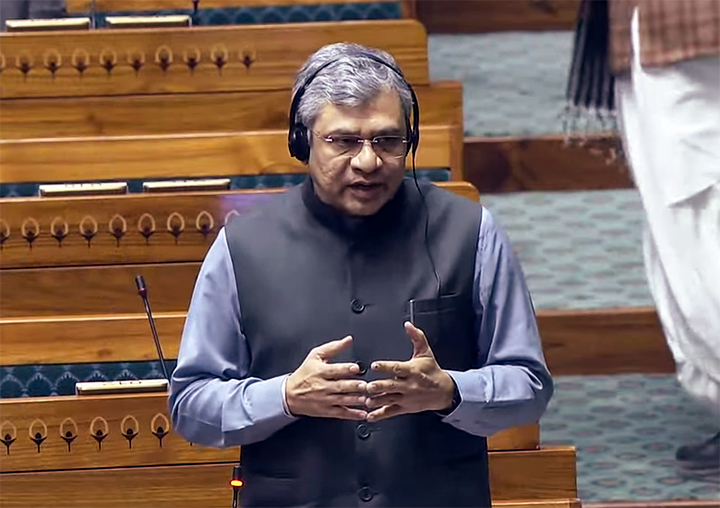The Union Railway Minister Ashwini Vaishnaw on Wednesday said that the budgetary allocation for railway infrastructure and safety works in Bihar has witnessed a nearly nine-fold increase in the last eleven years. From an annual average outlay of ₹1,132 crore during 2009–14, the allocation has surged to ₹10,066 crore in 2025–26.
Highlighting the transformation, the Minister informed in a written reply to the Lok Sabha that the commissioning of new railway tracks in Bihar has also seen substantial growth. Between 2009 and 2014, 318 km of new tracks were laid, averaging 63.6 km per year. However, from 2014 to 2025, this figure rose to 1,899 km, averaging 172.6 km annually- more than two-and-a-half times the earlier rate.
Several key infrastructure projects have been completed in Bihar in recent years. These include the construction of major bridges such as the Munger Bridge (₹2,774 crore), Patna Bridge (₹3,555 crore), and Kosi Bridge (₹516 crore). Other completed works include doubling of railway lines like Hajipur-Bachwara and Kiul-Gaya, gauge conversions across multiple routes, new line constructions, and electrification projects. The total expenditure on these projects runs into thousands of crores, reflecting the scale and ambition of ongoing railway expansion in the state.
The Minister said that although some of these bridges were sanctioned before 2014, significant progress was achieved only after that year. He credited improved planning, efficient execution methods, and consistent fund availability for the timely implementation of these large-scale works.
As of 1st April 2025, a total of 52 railway projects are sanctioned in Bihar, covering 4,663 km with an estimated cost of ₹86,107 crore. Of these, 1,014 km have been commissioned, and ₹29,353 crore has already been spent. These include 31 new line projects, one gauge conversion, and 20 doubling or multi-tracking projects.
The Minister underlined that railway projects are sanctioned zonally rather than state-wise, as many span across state boundaries. Projects are approved based on traffic projections, operational requirements, socio-economic impact, and suggestions from state governments and public representatives.
He added that timely completion of railway projects depends on factors such as land acquisition, environmental clearances, availability of funds, local law and order, and climatic conditions.
To improve mobility and safety, Indian Railways is eliminating manned level crossings by constructing Road Over Bridges (ROBs) and Road Under Bridges (RUBs). Between 2014 and 2025, 558 such bridges were constructed in Bihar. Additionally, 218 more ROBs/RUBs, worth ₹6,014 crore, are in various stages of implementation.
Under the Amrit Bharat Station Scheme, 98 railway stations in Bihar have been selected for redevelopment to enhance passenger amenities. Works have already been completed at Pirpainti and Thawe stations under Phase-I. Other stations including Saharsa, Salauna, Luckeesarai, Gaya, and Muzaffarpur are witnessing rapid construction activity. The redevelopment includes upgraded station buildings, foot overbridges, new platforms, improved parking and circulating areas, and enhanced accessibility.
The Minister informed that Bihar is also being served by 20 Vande Bharat trains and 10 Amrit Bharat Express services. Furthermore, two Namo Bharat Rapid Rail services are operational in the state, providing faster and more modern connectivity to the people.
Railway infrastructure projects in Bihar are managed by the East Central Railway (ECR), Northeast Frontier Railway (NFR), Eastern Railway (ER), and North Eastern Railway (NER) zones. The Ministry continues to monitor progress closely and updates are made available in the public domain through the Indian Railways website.














